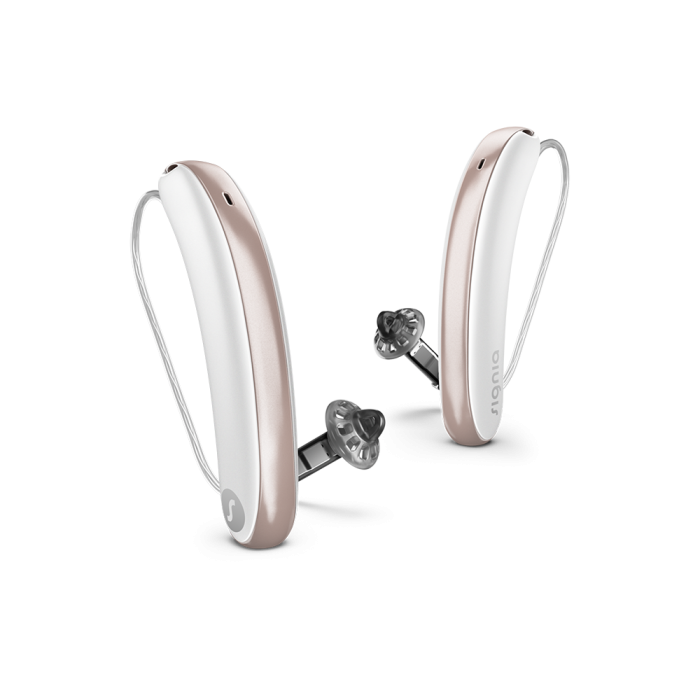
Our Blog
High Cost of Hearing Aids: Why Are They So Expensive?
Hearing aids cost significantly high which often deters many from seeking necessary solutions. However, they are very much worth the value, giving individuals with hearing loss some ray of hope. This article guides consumers in assessing hearing aid price to make informed decisions. So, why are hearing aids so expensive? Dive in below.

What Goes Into the Cost of a Hearing Aid
Hearing aids in 2024 cost up to $2000, and this price applies to just one hearing aid. A lot of factors can influence the actual cost. For instance, manufacturers of hearing aids in Toronto usually sell hearing aids to audiologists at wholesale prices. While they offer products at a discounted rate compared to the retail price, additional expenses for professional services and customizations can accumulate.
Generally, the price of a hearing aid in Canada is a sum of several variables. Here, we’ll explore how these factors contribute to overall hearing aid costs.
1. Advanced Technology
Technology underpins modern hearing aids. Engineers carefully design these tiny devices with core components such as powerful processors, microphones, and receivers.
Below are several advanced features for sound processing and enhancement:
-
Directional microphones
-
Noise reduction
-
Wind noise reduction
-
Feedback management
-
Speech enhancement
-
Sound equalization
They also incorporate computer chips set in different channels and advanced technology like Bluetooth connectivity which requires higher processing power.
Additionally, high-quality hearing aids have some level of resistance to body heat and moisture. This is a must for the longevity and performance of hearing aids, as they are worn in a warm, humid environment.
2. Manufacturing Cost
Hearing aid production is a complex process requiring precision and specialised equipment. The materials, including durable yet delicate components, add to the manufacturing cost. Furthermore, the meticulous assembly and quality control measures necessary for these medical devices increase the overall expense.
Every hearing aid manufacturer incurs significant overhead costs to maintain sterile production environments and comply with stringent regulatory standards. The customisation options available for many hearing aids also add to additional costs, including:
-
Sizes
-
Styles
-
Colours
3. Customisation, Fitting, and Professional Services
Individual hearing aids require customisation to address specific hearing loss needs. This process involves comprehensive hearing tests in Toronto, audiological evaluations, and careful fitting by a qualified hearing healthcare professional. These services, including ongoing support and adjustments, contribute substantially to the final price.
💡Did You Know? The emergence of over-the-counter or OTC hearing aids, while more affordable than customised hearing aids, are not for everyone. An unsuitable OTC hearing aid may cause discomfort or pain if over amplified. We recommend consulting healthcare providers.
4. Warranty
Hearing aid manufacturers offer warranties to protect consumers from defects and malfunctions. These warranties involve costs associated with repairs, replacements, and customer service.
The hearing aid warranty period usually spans at least one year up to five years. Warranties start as soon as the time of purchase and cover only the device.
✅ Pro Tip: Excessive earwax can damage hearing aids and block sounds, requiring frequent repairs or replacements. This can indirectly increase costs. For appropriate solutions, visit our wax removal services clinic and learn how to manage discomfort from hearing aid use.
5. Marketing
Like any consumer product, hearing aids require marketing to reach potential customers. Advertising, sales promotions, and public relations campaigns contribute to the cost of bringing a hearing aid to market.
These marketing activities contribute substantially to the overall cost of bringing a hearing aid to market. Additionally, ongoing marketing efforts are necessary to maintain brand loyalty and compete in a dynamic marketplace.
6. Research and Development
Research and studies put into the development of hearing aids are substantial. Likewise, these efforts require a certain budget. Hearing aid manufacturers invest millions in extensive and costly research and development to maintain their innovative edge.
Innovations include developing advanced sound processing algorithms and comfortable, discreet devices. This enables the integration of new hearing aid models, ultimately contributing to the overall product cost.
What Affects the Price of a Hearing Aid
Several factors influence the cost of a hearing aid, allowing consumers to select options that align with their specific needs and budget. One primary determinant is the type of hearing aid. Below are the major categories:
Type
The type of hearing aid sometimes impacts its price. The primary categories include:
-
In-the-ear (ITE) hearing aids: These devices fit entirely within the outer ear and offer varying degrees of customisation.
-
Behind-the-ear (BTE) hearing aids: Worn behind the ear with a tube connecting to a custom-molded earpiece, BTEs provide more power and flexibility.
-
In-the-canal (ITC) hearing aids: Smaller than ITEs, these devices fit partially within the ear canal.
-
Completely-in-canal (CIC) hearing aids: Discreet devices that fit completely inside the ear canal.
-
Custom-molded ITE and ITC aids: These devices are made from impressions of the ear for a precise fit, often resulting in a higher price point due to the personalised manufacturing process.
Brand
Hearing aid brands vary significantly in terms of reputation, technology, and features. Premium brands often command higher prices due to their investment in research and development, resulting in advanced features such as:
-
Noise cancellation: Reduces background noise for improved clarity.
-
Directional microphones: Focuses on sound from the front, enhancing speech understanding.
-
Automatic program selection: Automatically adjusts hearing aid settings based on the listening environment.
These features, combined with sophisticated design and robust build quality, contribute to the higher price points associated with premium brands.
Level of Amplification
The degree of hearing loss directly influences the required level of amplification. Hearing aids for mild to moderate hearing loss typically cost less than those designed for severe or profound hearing loss. Devices for severe hearing loss often incorporate more powerful technology, such as advanced digital processing and directional microphones, to effectively amplify sound.
There are also hearing aids that cater to tinnitus management features to provide relief. If you suspect hearing loss and related tinnitus, consult a hearing care professional here.
Where to Buy
The location of purchase for hearing aids can impact the price. Hearing aid dispensers, audiologists, and even online retailers offer different price points. Comparing prices and services is essential when making a purchase. Even the most expensive hearing aid may not necessarily be the best choice.
In Toronto, Canada, Bloor Hearing Clinic offers personalised hearing aid solutions. The professional audiologist can recommend the right device for your needs through a comprehensive consultation and fitting process.
Are Expensive Hearing Aids Better?
It’s true that advanced technology often comes with a higher price tag and way better quality. Conversely, not everyone needs the most expensive hearing aids. The best hearing aid is the one that effectively addresses your specific hearing loss needs and lifestyle. Prioritise features that align with your needs.
Consult with a qualified hearing care professional to determine the optimal hearing aid for your unique circumstances. They can assess your hearing loss, lifestyle, and budget to recommend suitable options.
Inexpensive Doesn’t Mean Lower Quality
The market for hearing aids is evolving, with more affordable options becoming available. Some cheaper hearing aids offer impressive performance, especially for individuals with mild to moderate hearing loss. While affordable options can be excellent choices for many, complex hearing loss might require more advanced and potentially pricier devices.
Beware of Cheap Hearing Aids
Exercise caution when purchasing extremely cheap hearing aids. Low-quality devices may not provide adequate amplification, clarity, or durability, potentially leading to frustration and dissatisfaction.
How to Get the Best Price, Best Value
To maximise your investment in a hearing aid, consider the following tips:
-
Canvass and search different hearing aid brands, models, and providers to compare prices and features.
-
Buy only what you need. Assess your specific hearing loss and lifestyle to determine the necessary features and level of technology. Avoid paying for unnecessary extras.
-
View your hearing aid as an investment in your overall health and well-being. Improved hearing can enhance communication, social interaction, and quality of life.
-
Consistent use of your hearing aid is crucial for maximizing its benefits. Regular wear helps your brain adapt to new sounds and improve listening skills.
-
Consider the long-term value of a hearing aid. Factors such as durability, warranty coverage, and after-sales support contribute to overall value.
Canadian Government Financial Assistance for Hearing Aids
The Canadian government offers financial assistance programs for individuals with disabilities, including those with hearing loss. Contact your local hearing loss association or government agency to learn more about eligibility and application processes.
Even general knowledge of the factors influencing hearing aid prices helps make informed choices. Find the right hearing solution to meet your needs and invest in quality hearing care.
